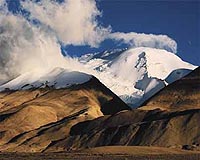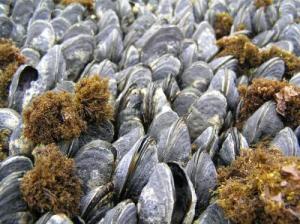
© Thomas Nash 2007Naimona'nyi's frozen ice cap lacks critical radioactive signal.
When Ohio State glaciologists failed to find the expected radioactive signals in the latest core they drilled from a Himalayan ice field, they knew it meant trouble for their research. But those missing markers of radiation, remnants from atomic bomb tests a half-century ago, foretell much greater threat to the half-billion or more people living downstream of that vast mountain range. It may mean that future water supplies could fall far short of what's needed to keep that population alive.
In a paper just published in
Geophysical Research Letters, researchers from the Byrd Polar Research Center explain that levels of tritium, beta radioactivity emitters like strontium and cesium, and an isotope of chlorine are absent in all three cores taken from the Naimona'nyi glacier 19,849 feet (6,050 meters) high on the southern margin of the Tibetan Plateau.
"We've drilled 13 cores over the years from these high-mountain regions and found these signals in all but one - this one," explained Lonnie Thompson, University Distinguished Professor of Earth Sciences at Ohio State.
The absence of radioactive signals in the top portion of these cores is a critical problem for determining the age of the ice in the cores. The signals, remnants of the 1962-63 Soviet Arctic nuclear blasts and the 1952-58 nuclear tests in the South Pacific, provide well-dated benchmarks to calibrate the core time scales.


Comment: See this article for an explanation on the thinning of Himalayan glaciers and a better picture of global warming (or lack of it).